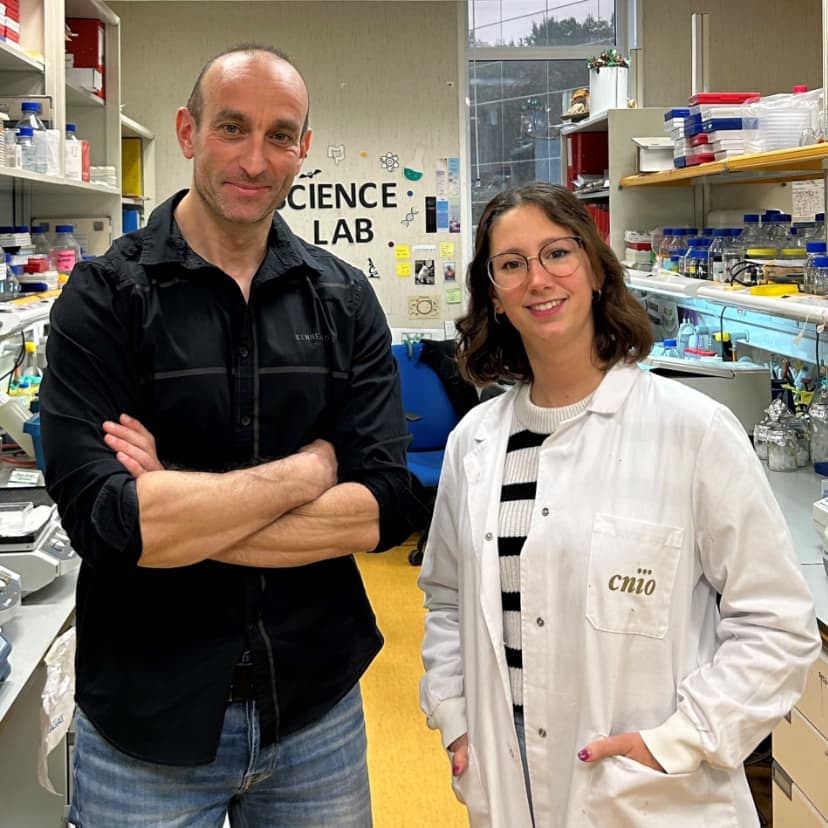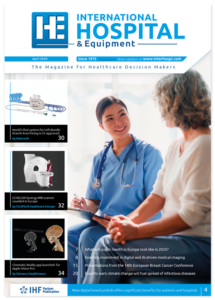Glutamate-triggered liver regeneration mechanism discovered
New research reveals a rapid regenerative pathway activated minutes after liver injury through glutamate signalling between liver and bone marrow, offering potential therapeutic applications for liver damage.

Nabil Djouder and Mar Rigual, at their CNIO lab. © CNIO
Researchers at the Spanish National Cancer Research Centre (CNIO) have identified a previously unknown mechanism of rapid liver regeneration triggered by the amino acid glutamate. The findings, published in Nature on 26 March 2025, detail a novel intercommunication pathway between the liver and bone marrow that activates within minutes of acute liver damage.
Liver-bone marrow communication pathway
The study demonstrates that injured hepatocytes rapidly produce glutamate, which enters the bloodstream and reaches the bone marrow. There, glutamate activates monocytes, which travel to the liver and transform into macrophages. Critically, exposure to glutamate reprogrammes macrophage metabolism, stimulating them to secrete growth factors that promote hepatocyte proliferation.
“Our results describe a fundamental and universal mechanism that allows the liver to regenerate after acute damage,” explains Nabil Djouder, head of CNIO’s Growth Factors, Nutrients and Cancer Group and senior author of the study. “These results may also help improve liver regenerative capacity in patients with severe liver damage, such as cirrhosis, or those who have undergone partial resection in surgery to remove a tumour.”
Role of glutamine synthetase
The research also clarifies how different liver regions coordinate during regeneration. The team identified that hepatocytes producing glutamine synthetase, an enzyme that regulates glutamate levels, play a crucial role in this process.
According to the findings, when glutamine synthetase is inhibited, circulating glutamate increases, accelerating regeneration. This is precisely what occurs during acute liver damage: glutamine synthetase activity decreases, blood glutamate rises, and the regenerative cascade is initiated.
“This is a new, complex and ingenious perspective on how the liver stimulates its own regeneration,” notes Djouder.
Therapeutic implications
While the experiments were conducted in animal models, the researchers validated their findings using bioinformatic tools with both mouse and human hepatocyte databases.
The authors suggest that nutritional glutamate supplementation could effectively promote liver regeneration in various clinical scenarios. Potential applications include supporting recovery after hepatectomy, stimulating liver growth in patients with severe damage, and potentially benefiting those awaiting transplants.
María del Mar Rigual, first author of the paper, highlights an additional research direction: “Exploring further the possibility of using glutamate supplements in humans who have undergone liver resection for tumour removal.”
Growing relevance
The discovery comes at a critical time when liver diseases associated with poor dietary habits and alcohol consumption are increasingly prevalent. When chronic damage occurs, as in cirrhosis, the liver’s natural regenerative capacity becomes compromised.
Developing methods to reactivate liver regeneration has significant clinical implications, particularly for patients with severe liver damage or those requiring surgical resection for tumour removal.
The research was funded by the Spanish Department of Science, Innovation and Universities, Fundación BBVA, and the Spanish Cancer Association (AECC).
Reference
Rigual, M. M., & Djouder, N. (2025). Macrophages harness hepatocyte glutamate to boost liver regeneration. Nature. https://doi.org/10.1038/s41586-025-08778-6

